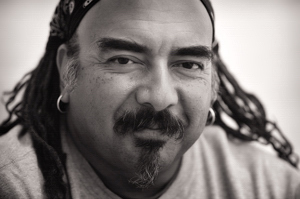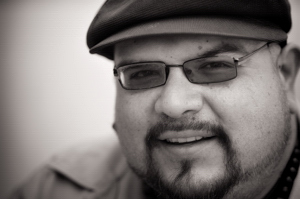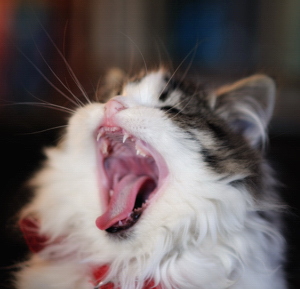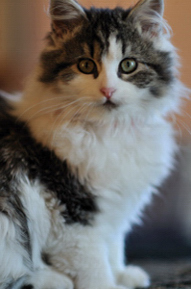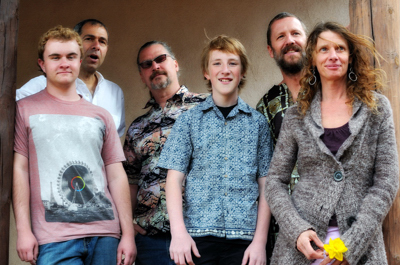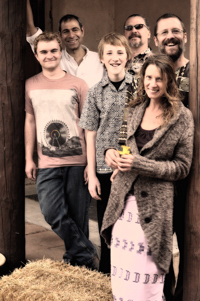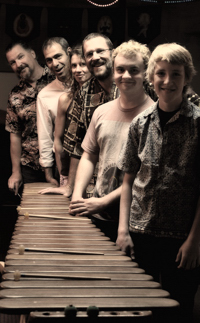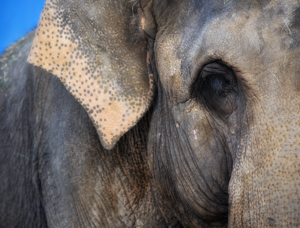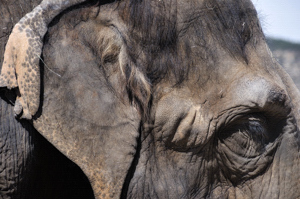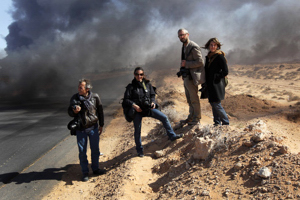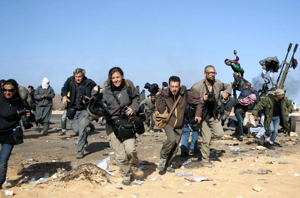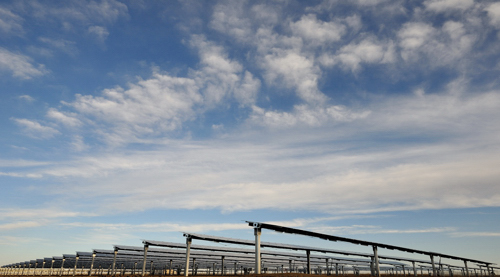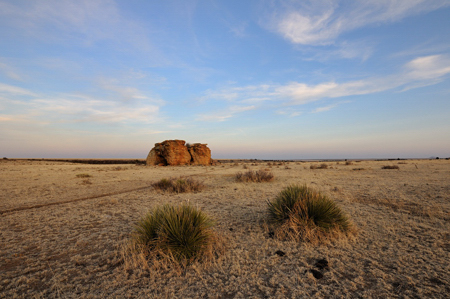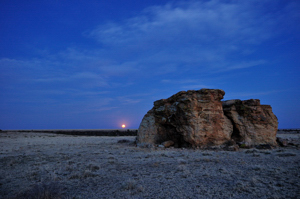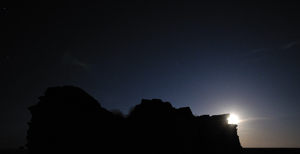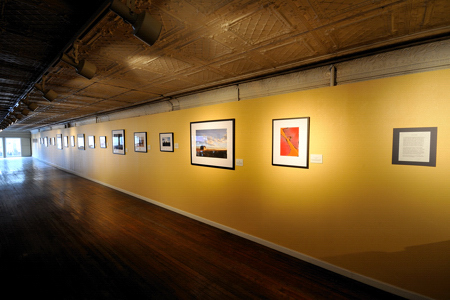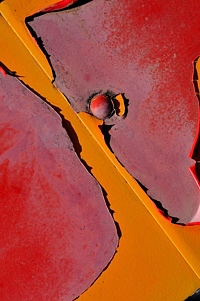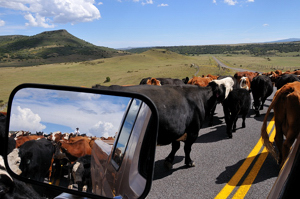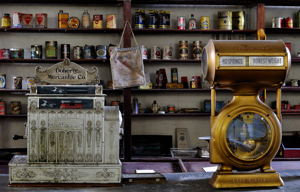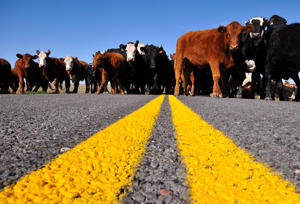|
April 23, 2011 Through the Eyes of a Poet Albuquerque's much-traveled and much-awarded performance poet Danny Solis was kind enough to do a quick portrait sitting for me this week. The best portraits communicate -- express -- giving the viewer a rare and intimate glimpse of (I want to say into) the subject. The elusive goal here, then, is to catch a glimpse into the soul of a poet. And why not: poets are all about expression. They do it with words. Here, I try it with an image. It's still communication of the subject, the poet; the photographer is hidden. Danny's colleague, peer, and Albuquerque neighbor Manuel Gonzalez also gave me a shot. Both men were in Raton, and in my classroom, as poets-in-the-schools, part of a two-week residency provided by New Mexico CultureNet and supported by the Whited Foundation. (See them in action at today's TKA Blog.) Next week, Belen poet Jessica Helen Lopez will join Manuel here and I'm hoping to add her portrait to these of Danny and Manuel in a new row of three across the top of my Black & White Portraits gallery.
April 17, 2011 Near Mrs. Bloggers need content but this week I didn't take any pictures worth posting here, so I've gone back to a series of late afternoon portraits I took of Sonrisa, the very feral tiny kitten my wife took in last December. Sonrisa had been living in a big cage in our guest room and was just now tame enough to let out to roam the room. Here she's sitting atop the cage while I fire off frames using window light. These shots are both near misses -- my title above plays with the double meaning because Sonrisa is now so closely bonded with my wife: they're asleep together as I write, thus "Near Mrs." The image on the right is similar to the "keeper" I posted here on January 9, but Sonrisa's ears are cut off, the result of working very fast with the 85mm portrait lens which has no zoom so I needed to move back a few inches. (With the prime lenses, I think of myself as a human zoom, constantly framing by moving backward and forward.) The yawn image has a problem of depth of field and focus. I set the aperture to f/1.8 for a depth of field so shallow that one tooth might be in focus and the next not. Then I worked so fast to catch this yawn at its apex that the auto-focus wasn't able to engage. As a result, the infinitesimal plane of focus doesn't catch much of anything -- it's somewhere in mid-mouth. (As always, click any image to enlarge.) For this shot, a wider aperture with more depth of field would have been appropriate. I explained that to Sonrisa but she wouldn't yawn again.
April 9, 2011 So three musicians and a marimba player walk into a bar... Given all the years -- a quarter century! -- that I was fully immersed in music, it surprises me that a photo shoot I did for Polyphony Marimba in Santa Fe this week was the first "band shoot" I've done as a photographer. That's my sister-in-law, Christina's sister Karyna, in front, with her guy Peter Swing, the bandleader, right behind her, and Peter's remarkably talented 12-year-old son Raven next to him. Like all bands, they need promo photos -- I still have stacks of unused 8x10 B&W headshots from back in my day -- and I love every photography project I can get my hands on. There aren't any bands to speak of in the far outback where I live, but God knows there's no shortage of them in Santa Fe! Polyphony Marimba has seven members, and seven marimbas! One player, Ethan, had to run off to a class so he's in only one image I provided the band. He has a cool look so I'm sorry he's not in the pictures I'm posting here! We were able to hear the band the next night at El Museo. Christina danced up a storm while I marveled at the great multi-layered music they produced with just a pair of shakers and seven marimbas of various sizes from small to huge. They're fun to watch. All of the marimbas are made by Dan Pauli, in sunglasses above, and by Peter; apparently there's a relationship between marimba building and beards. They fill custom orders for musicians in Santa Fe and as far away as Boulder, Colorado. I enjoyed the project and look forward to spotting our photos in performance listings and ads in the Santa Fe newspapers.
April 4, 2011 Elephants When the 75-year-old Carson & Barnes Circus came to Raton for two shows yesterday, there was plenty of doubt whether the show would go on. Persistent 30 mph winds often bucked up to 60 mph, making it impossible to put up the big top tent and difficult on the animals and other living things...such as photographers. And things less alive, such as cameras and lenses, which were quickly and repeatedly covered in a film of dusty blown dirt. Christina and I arrived with the sunrise in hopes of great images of the circus troupe setting up, including the elephants helping raise the big top. I'm sure the wind explains why there was only one other photographer there early -- he was there for an hour then never returned -- and other cameras only began arriving with the crowd at about 2 p.m. for a 3 o'clock first show. We would have left, too, but we were 40 miles from home so we stuck. Alex the Clown shared star billing of the show with the elephants, but the elephants were stars all day long. Christina even paid $6 to ride atop one for two minutes. I was happy to take portraits instead. I'm posting a pair of show photos, including an elephant, on my TKA Blog today, but here I present my favorite pair of portraits, of elephants in Raton.
April 2, 2011 When Photo Ops Can Kill You War photography fascinates and attracts me, primarily because these photojournalists are fully immersed in great photo opportunities day after day, which any photojournalist has to envy. The photographers at right took a moment to pose on the roadside in Libya during a lull in the fighting between Libyan rebels and Muammar Gaddafi's loyalists. I've been following the work of the two in the center -- Lynsey Addario and Tyler Hicks. Another fascinating photographer is 23-year-old Ed Ou, who sent riveting (and sometimes endearing) tweets as he entered Libya: the New York Times and NPR ran the tweets as poetry. (Explore the links: they all lead to striking work by gifted photographers.) The grandmaster of war photography and all things disastrous -- he was on the ground in northern Japan the day after its catastrophic earthquake, tsunami, and nuclear emergency -- is James Nachtwey, whose work is lyrically documented in the powerful film War Photographer. I love the contrast between the photo above and this later one showing the same photographers. The first portrays war photographers as rock stars -- "what a cool life!" -- while the second shows them running for their lives as bombs fall all around them. I find a touch of humor in the contrast. (I'll bet the photographers are now thinking what I am: the guy who took this photo, Paul Conroy, was the coolest of all: instead of running from the falling bombs, he turned and took the picture of the others!) There was no humor days later when Addario and Hicks were among four New York Times journalists captured by Gaddafi's forces and held for six days in conditions alternately terrifying and deadly boring. They were held in a single empty room for four days with only boxes of cornflakes and four Shakespeare plays. These action junkies were so bored that they read all the plays and now joke that they were about to start performing them when, instead, they were released and flown home. They're all planning to continue their work.
P.S. For a sobering follow-up to this discussion, read James Rainey's April 23 column in the Los Angeles Times.
March 26, 2011 By the Light of the Sun I recently finished a quick corporate commission to get images of a solar facility for use across the top of a website for an energy company's new power transmission line from eastern New Mexico to southern California. The referral came from an editor at a magazine I work with. With phone calls and e-mails up the food chain through four companies, I tried to gain access to the Cimarron Solar Facility, between Cimarron and Springer in northeastern New Mexico. No luck. I pulled up to the site with a tall stepladder in my back seat. No one was around. My tripod didn't extend high enough to get my camera over the top of the chain link fence, but on the stepladder I was able to hold the camera high enough to shoot between the strands of barb wire atop the chain line fence. As I walked around getting images, I noticed that there were places where the chain link fence didn't extend all the way to the ground: there was enough space for me to lie on the ground and extend my camera under the fence, then hold it back up to where I could see through the viewfinder, through the fence. Immediately I saw that this provided dramatic images, and they're what we ended up using. I spent almost three hours on site, waiting as clouds moved in and out, waiting until the sun set and the full moon rose. The solar technology threw a wrench in my plans: as the sun sank lower and gave me the more dramatic light I was waiting for, the solar panels rotated upward, away from the sun. That seemed counterintuitive to me; in any case, the structures became less obviously solar panels. The image at the top, above, was shot at 4:30 p.m., my first shot under the fence. The second image was shot from the same spot two hours later. The clouds had moved in, but the solar panels had turned upward. (The first image was shot with the Nikon 18-200mm lens at 18mm; the second used the Sigma 10-20 lens at 14mm. Both used an aperture of f/16 for deep crystalline depth of field.) It was an interesting and enjoyable job. The company licensed these two images and two others, including one with the moon. They want to add a ranching image to their site; they're currently deciding between three of my cattle drive images, including one I'd never before processed. If this is what corporate photography is like, I'm good to go. Send it my way.
March 20, 2011 By the Light of the Moon For last night's Perigee Moon -- the closest the moon has been to the Earth in 20 years -- Christina suggested we photograph from this dramatic location on the Vincent family's nearby Springhill Ranch. The results are unique compared to other dramatic images posted on the world's newspapers and on Flickr by countless photographers, including my friends Alix King and Tom Spross in Albuquerque. We arrived just before sunset, above. I had attached my Sigma 10-20mm wide-angle lens at home: shooting the Cimarron Solar Facility for a client exactly 24 hours earlier, I'd gotten dirt on my Nikon D300's image sensor while changing lenses, even sheltered in the car, during high winds. As the sun set last night, I fixed the ISO to 640 for a little extra light-gathering capability, then set up for manual exposures, shooting the one above for 1/30 second at f/16 for depth of field. I set the tripod low to the ground to accentuate the yuccas in the foreground. Shooting at 12mm, they're actually almost close enough for me to reach out and touch: the wide-angle lens exaggerates depth, seen here to great effect. For best results with a wide-angle lens, you want to get something of interest in the near ground, in the mid-range, and in the background. The yuccas, the rock formation, and the clouds fill those roles here. The cow path is an added bonus, giving the eye a line to connect the different fields. (As always, click any image to enlarge it.) When the moon arrived, Christina and I both scrurried around getting shots from different vantages. I wanted to capture the drama of the rock formation, which has intrigued us since we moved here 12 years ago, so I set the tripod well back from the rock. This image was shot at f/11 for 13 seconds. I wondered whether the moon was moving fast enough to blur a little in 13 seconds, but apparently not. With all sunlight just about gone, it was challenging to get enough light on the rock formation and foreground while still properly exposing the moonlit sky. I tried several different exposures, with this one getting what I wanted. By the way, if you compare this to those linked above, you'll see that their moons are huge and mine is tiny! That's because the other photograpers were far from the objects in their foregrounds and they used telephoto lenses to compress the distances, resulting in huge moons. I went the opposite direction, using the wide-angle lens to extend the distance. The result accentuates the land itself, my intention, with the moon in a supporting role. I ended the night with this final shot of the moon tucked into a slot in the rock, a vantage Christina found and suggested to me. It was pitch dark out now, the moon providing all the light, the sky filled with stars. This one was shot at f/6.3 for 6 seconds. Shot 80 minutes after the shot at the top, it was a dramatic way to close a fun date for us. We drove the dirt road ten miles home and cooked up a celebratory dinner...before processing our shots!
March 13, 2011 To Show or Not to Show? For such a small town (population 7000) in such a remote rural area, Raton, New Mexico, has a remarkably vibrant arts scene, anchored by the historic Shuler Theater and the Old Pass Gallery, run by Raton Arts & Humanities Council (RAHC). Since plunging into photography three years ago, I've taken advantage of two prestigious annual juried group shows in Raton as a means to share my work, build my reputation, and even earn prizes and cash awards. There's April's Solano Photography Exhibit and Sale at the Old Pass Gallery, and September's granddaddy arts event for the entire region, the International Art Exhibit and Sale at International Bank in downtown Raton. Both are sponsored by RAHC. However, this year, I've decided not to enter the shows. It's primarily economics. My pieces cost me, depending on size, $150 to $500+ each to professionally print, matte, and frame under UV-protected glass. That results in a much higher selling price than other works which are framed cheaply -- what I sometimes refer to as the Hobby Lobby approach. Only a close examination can tell the difference now, though in ten years my museum-standard framing and glass will clearly show why they're worth the extra cost. In order to sell a piece, I have to ask a price that allows me to simply break even: I make no money for my considerable efforts. (My printer is in Colorado, my framer in Santa Fe -- plus, I went out and got the shot in the first place.) The printer, framer, and gallery each make their regular fee, but with a sale, I only recoup my costs. Even so, my prices -- which look low in Santa Fe -- are too high for Raton. Most of the images I've printed and framed for Raton exhibition have not sold: I have a couple dozen pieces, representing thousands of dollars of investment, sitting idle. (Many hang for sale at Studio C in tiny Des Moines, where they do occasionally sell to passing tourists; most recently, a vacationing couple picked up a moderately-sized "Lee" for $450 and packed it for their drive home to Rhode Island.) Meantime, I've turned most of my photographic attention to storytelling and publication in magazines and newspapers. That's gone so well that it produces regular work and a steady income. It's brought me far more viewers than the local shows could ever hope to provide, and it's built my reputation in such a manner that it keeps bringing me new opportunities. When I can make thousands of dollars producing work for publication, why spend thousands to frame work that just comes home after a show? I've enjoyed winning awards, including Best of Show at the 2009 Solano Show, but it's even more rewarding to see my work in top national magazines. So, at least until my back stock of framed images on sale at Studio C begins to run low, I'll focus my attention on work for publications and here on the websites.
March 5, 2011 Gifts from the Sky Out of the blue this week, I received an e-mail from a photo intern at National Geographic Traveler. She licensed a pair of my images for publication in the magazine's May-June 2011 issue, where they'll illustrate a feature titled "New Mexico Road Trip". I generally devote a good deal of work, time, and persistence for each appearance my work earns in a magazine, so this was like a gift from the sky. I inquired how they'd found my images and learned that the photo editor had searched Flickr, where I assume she searched for "New Mexico" tags. Under each of my photos at Flickr, I have a link to my own website so she was led here, to TKP, where she selected these two photos for the magazine feature.
The selected photos portray the original counter at Doherty Mercantile Co., where the Folsom Museum has been housed since 1968, and a cattle drive across the top of Johnson Mesa on Highway 72. Both images have been published before: the top photo was featured in the 2010 New Mexico Vacation Guide; the "Centerline" cattle photo was the cover of the 2009 Beefspotter Atlas -- the largest licensing fee I've earned to date, by the way. National Geographic Traveler becomes the fifth magazine to feature my photography, and I couldn't be more thrilled. Photographers, especially, should enjoy the magazine's fabulous photography website, where I aspire to join their roster of extraordinary photographers.
|
